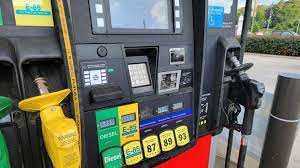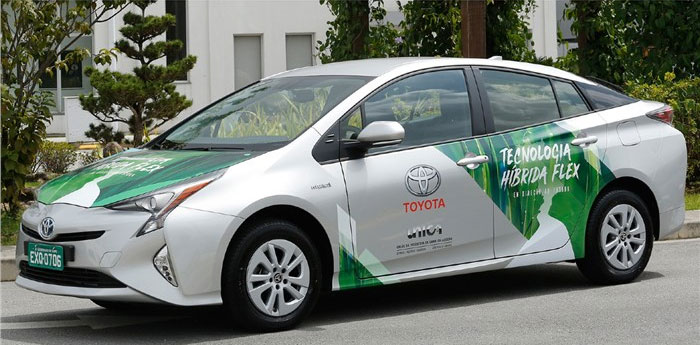Flexible Fuel Vehicles
Nov 28, 2023 By Susan Kelly
FFVs are automobiles, sport utility vehicles (SUVs), or trucks that can operate on either gasoline or a gasoline-ethanol mix that contains up to 85% ethanol. E85, E15, and E10 are all examples of common gasoline-ethanol mixes. The number after the letter "E" indicates the maximum amount of ethanol included in the fuel. Although ethanol has a lower energy content than ordinary gasoline, such vehicles generally do not display any performance loss other than a decrease of 15% to 27% in their fuel economy when E85 is utilized.
The Mechanisms Behind Flexible Fuel Vehicles
In 1908, Henry Ford created the first flexible fuel vehicle (FFV), a Model-T Ford that could operate on gasoline or ethanol. However, the first FFV to be manufactured in big quantities did not become available for purchase until the year 1994. In that year, Ford introduced the Taurus E85, which was capable of operating on either regular fuel or gasoline that had been mixed with ethanol. Additionally, it was equipped with a computer system that could differentiate between various fuel mixes to improve the vehicle's overall performance.
There are now a great number of different alternatives for FFVs available on the market today. As of 2018, more than 24 million fuel-efficient vehicles were operating on the roads in the United States, as the Renewable Fuels Association reported. FFVs have the same pace, payload, power, and cruising speed as conventional automobiles and trucks fueled by gasoline, and they need the same level of maintenance.
The primary distinction lies in the fact that FFVs have fuel systems and other components specially engineered to manage mixtures of gasoline and ethanol with concentrations ranging from 0% to 85%. The lower energy level of ethanol implies that you will obtain 15% to 27% fewer miles per gallon with a flexible fuel than gasoline, which only contains around 10% ethanol. This design allows gasoline to be utilized when E85 is not available. You won't normally see any significant performance loss; some FFVs provide better torque and horsepower when they operate on E85 than when they run on gasoline.
Pros
Alternative fuel options
You can use either regular gasoline or a mixture of gasoline and ethanol when you have a flexible fuel vehicle (FFV), as the name suggests. You may be able to save money by purchasing E85 rather than gasoline in your location, for instance, if the price of E85 is less than that of gasoline. And if the mix is not available, you can fuel with regular gas.

Toxin-free vapors
Even though FFVs continue to expel waste from the exhaust, ethanol is a renewable fuel that burns cleaner than standard gasoline. This helps reduce greenhouse gas emissions and keeps the air around you cleaner.
Cons
Lower fuel economy
Traditional gasoline is a more efficient fuel than ethanol; to put it another way, an equivalent volume of ethanol-laden fuel has a lower total amount of energy that can be used. Because of this, the fuel economy of a flex-fuel car that operates on a mixed fuel, such as E85, is likely to be somewhat worse than that of a vehicle that runs only on E85. When you choose this fuel, you may have to spend more money to drive a shorter distance depending on the price of the E85.
Limited availability of E85
Over 2,500 gas stations in the United States sell E85. However, it's possible that the pump at your local gas station doesn't offer it. If this turns out to be the situation, you'll have an FFV, but you won't be capable of taking advantage of its advantages in terms of the environment and savings on fuel.
Cost
There is no guarantee that the price of an FFV will exceed that of any other kind of vehicle. The Department of Energy in the United States provides a list of many different FFVs available for purchase. Models such as Ford Explorer, Chevrolet Impala, and GMC Yukon. The expenses associated with driving your automobile will also depend on the fuel you choose to use and the costs associated with maintaining your vehicle.

Your geographical location, the current situation of the global oil market, and the amount of maize and sugarcane harvested in recent years may all affect the fuel price. In most cases, the cost per gallon of E85 is lower than that of ordinary gasoline, but the cost per mile is higher. As of November 2021, the price of a gallon of E85 in the United States is an average of $2.74, while the price of a gallon of normal gasoline is $3.68.
-
 Know-how Nov 25, 2023
Know-how Nov 25, 2023Demystifying the Annual Insurance Review: Your Simple Guide to Ensure Adequate Coverage
Unlock the secrets of an effective annual insurance review with our simplified guide. Learn to navigate your insurance policy, make informed decisions, and ensure your coverage meets your needs.
-
 Know-how Dec 07, 2023
Know-how Dec 07, 2023How To Choose Personal Finance Software
Personal finance software helps you consolidate your financial data. Personal finance software helps you create and maintain a budget, examine your investments, and generate asset reports.
-
 Investment Nov 13, 2023
Investment Nov 13, 2023Paid vs. Free Real-Time Stock Charts
Real-time stock charts are available for 5-minute, 1-minute, and additional intraday charts time frames on various websites and platforms. A few of them even provide cost-free access to real-time stock tracking capabilities. Depending on your objectives, it can mean a lot to you.
-
 Taxes Jan 12, 2024
Taxes Jan 12, 2024Situations for Paying Taxes on Lottery Winnings
While it is true that the chances of winning the Powerball lottery are very long, someone will always be successful in beating those odds. In addition, they will be required to make tax payments on their earnings.
